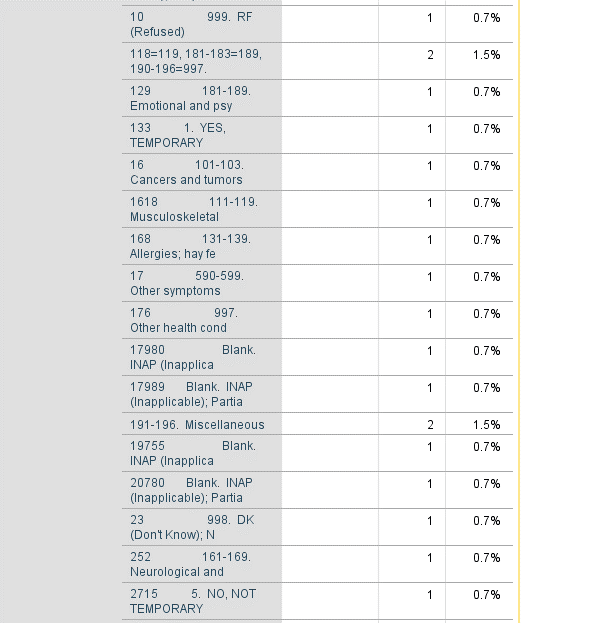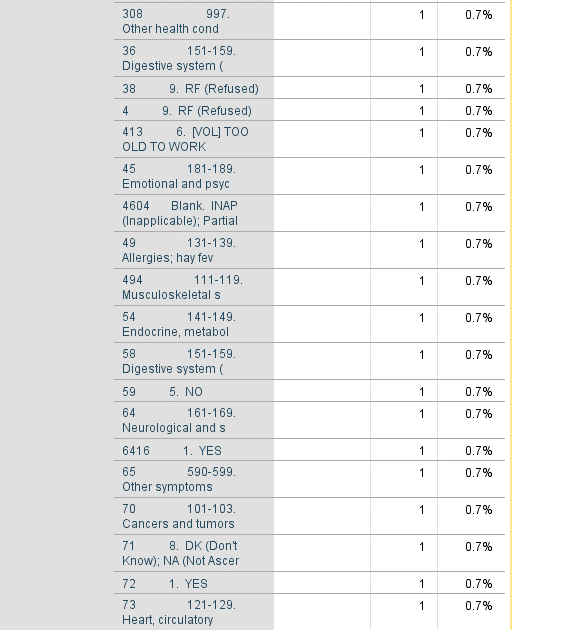Homelessness, Incarceration and Mental Health and How They Are Related in Adult Age
Abstract
Depression is categorized as a mental health disorder. It involves loss of interest in activities, depressed moods. Depression also causes impairment in day-to-day life. Little is known about homelessness among older adults in relation to mental health. Using data from the National Survey on Drug Use and Health, it was discovered that the life course related to earlier against late homelessness causes significant depression, Cummins (2019). Individuals may become homeless due to gender differences. Senior individuals who live alone and who are not stable economically and lack social and family support are likely to become homeless. Depression causes a reduction of peoples’ abilities to rehabilitate. Studies show that depression increases the chances of death. Depression in old individuals possesses a high level of danger of cardiac diseases. It affects old individuals in a very different and drastic way compared to the youths. When an older person is depressed, chances of having other medical illness is higher. Research shows that the link between homelessness and mental illness has a huge correlation. It is difficult for a person to make a stable income or do day-to-day activities if they have a mental illness. This makes it difficult for the person to have stable housing. Poverty makes more people homeless, Cummins (2019). The unavailability of low-income houses causes homelessness. People who are homeless may find themselves abusing drugs, use alcohol due to high stress or depression characteristics. This factor reinforces the connection between homelessness and health. In general, there exist a very high correlation between older people who have been incarcerated or homeless and depression due to various factors, including reduced body immunity, lack of proper living conditions, lack of balanced diet, and high exposure to harsh environmental conditions. The research herein is done to determine and prove the existence of this correlation.
Introduction
In recent years the number of adults who are experiencing homelessness has increased according to a recent study, the rise is attributed to the high cost of living and hard economic times, Cummins (2019). The study showed that those individuals that were born between 1954 and 1963 and currently living in either incarceration or homeless conditions are at greater risk of also being depressed or experiencing other forms of mental health complications, Cummins (2019). Homeless adults possess unique health complications as compared to those homeless individuals that are young. The need for strategies that can help reduce or prevent homelessness among older adults is required. The National Survey on Drugs and Health research shows that individuals who became homeless in old age must have experienced job loss, parent death, and relationship breakdown. They are likely to suffer impairments and worse mental health, Brignone (2018). Recent research shows half of the old individuals who are homeless were subject to homeless in middle age for the first time, Cummins (2019). The problem of homelessness is likely to have been caused by a lack of suitable employment for unskilled and semi-skilled workers who are middle age. Development and growth have specific periods that need to be understood through the approach that recognizes health. Examination of critical period models which are conceptual to the course of life, Cummins (2019). Every specific period has a lifetime effect. Factors that course risk at every periodic stage come together to make risk. There is no enough evidence to shows whether events that were negative in life during the critical period accumulation of risk model paves the way for homelessness.
Those who live in homeless shelters are more likely to be the target of thieves and the criminals who dwell there, which can even elevate the already existing mental health strain. Women are more likely to be greatly affected by such activities than men, which can cause mental illness which might not be corrected due to lack of funds; the untreated mental illness for women can impair thinking, which is direr to them than it is for men, Moschion (2019). Research shows that one-third of women who are homeless have been sexually abused. Homelessness causes mental health, but it also exposes women to deadly infections like HIV/AIDS. Evidence shows that old people who are homeless and suffering from mental illness are more likely to be in danger of losing their lives, Brignone (2018). It worsens if these people happen to be women in old age and can become lethal as old individuals who are mentally ill can cause fatal accidents because of impaired thinking. Untreated psychiatric illnesses of homeless people can lead to murder. Most homeless people are not aware that they are mentally ill. Those people who are homeless hide from other people. They tiptoe along the streets during the day, Moschion (2019). They talk to their voices when they think they are all alone. They take shelter mostly in those houses that are abandoned. Such behaviors prevent them from getting the help they greatly require, Schwartz (2019).
Old-age people who are homeless do experience sociodemographic and health-related life complications. These experiences comprise health status, imprisonment, and socioeconomic attainment. Having difficulty paying bills, mental disorder, unemployment, being unable to pay bills, and not having a spouse/partner may lead to traumatic brain injury, Brignone (201). This was evident when the National Survey on Drug Use and Health used a model that includes a single dichotomous variable. A model with a cumulative score variable gives accurate results on whether the homeless have to experience alcohol problems. Different measures of health status differ by age at first adult homelessness, Moschion (2019). There is a higher prevalence for individuals that their first homelessness happened at the age of 50. The prevalence includes severe depression symptoms and hallucinations. Those people who were homeless before the age of 50 have a high risk of abusing drugs. Impairment is more common to the people who were first homeless at the age of 50.
Method
The data used here was obtained from the 2002 Survey of Inmates in local incarceration places, a survey which was conducted by the BJS (Bureau of Justice Statistics), a part of the Department of Justice, Moschion (2019). The data was obtained through interviews in different jails with inmates across the country.
A stratified design was employed in that survey; the surveyors selected a group of inmates from the large population to be used in the study and then grouped them into individual groups of 6 people. A total of 3 jails were selected from a large number of jails. Every third jail was selected from the selected jails after grouping them into male, female or juvenile jails.
A sample of 50 was obtained from the inmates by random selection, and one in every odd male inmate was selected, for the females, after even and 12 in juvenile. The strategy saw the completion of 32 interviews.
The Chi-square test was used to determine the data results and determine the relations between homelessness, incarceration, and depression and SPSS was used to analyze the data from the HRSS.
Results
Discussion
According to the data of the National Survey and Drug use and health and data from the conducted survey, almost half of the old homeless people become homeless for the first time at the age of 50 and have been in jail at least once, Moschion (2019). Their life and experience in life and health status differ from those who were first homeless before the age of 50. There is lower attainment and a more severe history for the people who had previously experienced homelessness when they hit 50. The experiences are associated with the earlier onset of homelessness, Brignone (2018). Research shows that individuals who were first homeless at the age of 50 have more current venerability than those who were first homeless after 50.
A huge percentage of 84.7% (N=32) of the sample never experienced homeless in the previous 12 months before jail, 12.4% had experienced homelessness in the last 12 months before incarceration. 2.9% were homeless when they were incarcerated 0.7% had been sick mentally before incarceration.
Using the Chi-square shows a significant relationship between inmates who had previously experienced homelessness and mental illness. All the inmates experienced mania symptoms and signs such as depression, psychosis, and substance abuse, but the rate was high in the homeless inmates who registered a rate of 10%k higher. The percentage of homeless inmates reporting mental related illness was also 15% higher in homeless than the domiciled inmates. Substance use problems, mental health, poor social support, and socioeconomic difficulty lead to a high risk of becoming homeless, Moschion (2019). Drug abuse and mental illness may raise the chances of homelessness by reducing one’s ability to retain employment, relationship, and housing. Homelessness makes the situation worse by precipitating mental illness and drug abuse. Due to a lack of social support and suitable employment, there is an increased risk of homelessness, Brignone (2018). The earlier onset of homelessness may be due to the negative experiences during the critical life course period. During young middle-age is a formative stage. Suppose one experiences socioeconomic problems due to life course periods. There is a likelihood that these individuals will achieve less; hence they won’t establish themselves financially, Moschion (2019). Imprisonment has adverse psychological and physical health. May as well affect the ability to get financially stable and obtain suitable employment.









